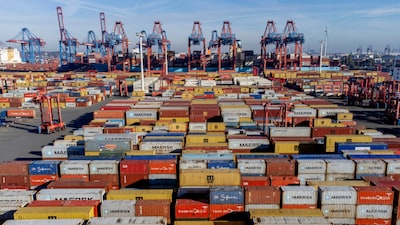Key Takeaways
- India plans to ease SEZ-domestic market barriers to boost trade
- Proposals include customs duty rationalization and rupee payments
- Reforms could transform SEZs into integrated development hubs
India is planning significant reforms to ease restrictions between Special Economic Zones (SEZs) and the domestic market, aiming to boost exports and enhance manufacturing competitiveness amid global trade uncertainties.
The Prime Minister’s Office is currently in discussions with commerce and revenue departments to make SEZs more competitive, according to The Economic Times report.
Proposed Reforms Under Consideration
The key proposals being examined include:
- Rationalizing customs duties on sales from SEZs to Domestic Tariff Area (DTA)
- Allowing payments in Indian rupees for domestic services
- Permitting domestic units to send goods into SEZs for outsourcing
“There are some issues that the SEZs face… these issues are being examined,” a government official told The Economic Times.
Another official stated the government is exploring ways to make the framework “nimble enough to respond to business challenges, especially in an uncertain global environment.”
Current SEZ Performance and Legal Framework
India’s SEZs, designated duty-free zones considered outside the country’s customs territory, currently account for approximately one-fifth of total goods exports. In FY25, exports from 6,300 units across 276 operational SEZs reached Rs 14.57 lakh crore, marking a 7.4% year-on-year increase.
The government may need to amend the SEZ Act, 2006, to implement these proposed changes and encourage manufacturers to scale up operations.
Industry Perspective on SEZ Transformation
Industry experts believe these reforms could transform SEZs into comprehensive development hubs.
“It’s about fundamentally shifting the focus from a purely export-centric model to one that promotes integrated development hubs balancing both international and domestic sales,” said Pratik Jain, Partner at Price Waterhouse & Co LLP.
Jain emphasized that easing customs norms and involving states more actively could “revitalise SEZs into engines of job creation and next-generation manufacturing, such as semiconductors and green energy.”
Ajay Sahai, Director General of the Federation of Indian Export Organisations, stressed that “India’s SEZs need a structural reboot to restore export competitiveness. The government must move swiftly to integrate SEZs with the domestic economy while enabling digital clearances and reducing transaction costs.”






